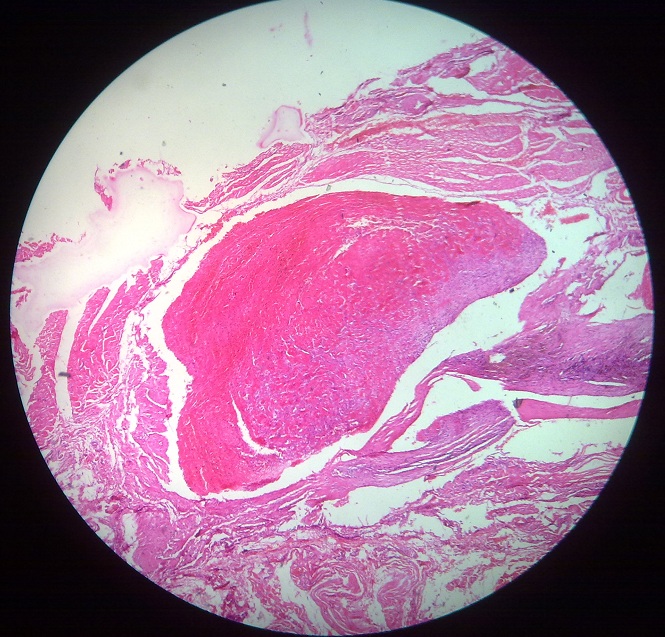Inappropriate activation of normal hemostatic mechanism, such as formation of blood clot (thrombus) in an uninjured vessel or thrombotic occlusion of a vessel after a relatively minor injury.
Arterial or Cardiac Thrombi
Cardiac thrombi can occur within the chamber or on the heart walls/valves. Associated conditions are myocardial infarction, atherosclerosis, arrhythmias, dilated cardiomyopathies.
Arteries commonly affected by thrombosis are coronary arteries, cerebral and femoral. They grow in retrograde direction (towards heart) from point of attachment.

Morphology
Gross
Arterial thrombosis is firmly adherent to injured arterial wall. It is grey white in color, friable and has gross laminations called lines of Zahn.
Microscopic
Lines of Zahn, when seen under microscope, show alternate layers of pale and dark areas. Pale areas are produced due to fibrin. They are not attached to the underlying vessel wall.
They do not reveal laminations.
Want a clearer concept, see all images on Thrombosis
 howMed Know Yourself
howMed Know Yourself




